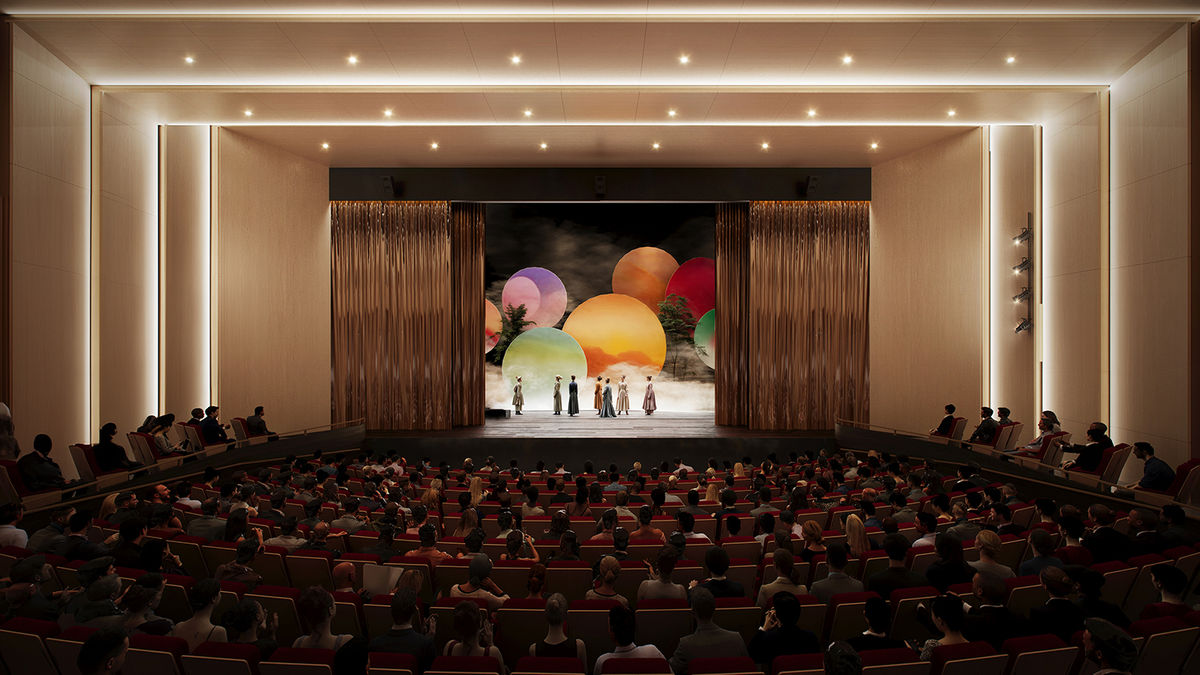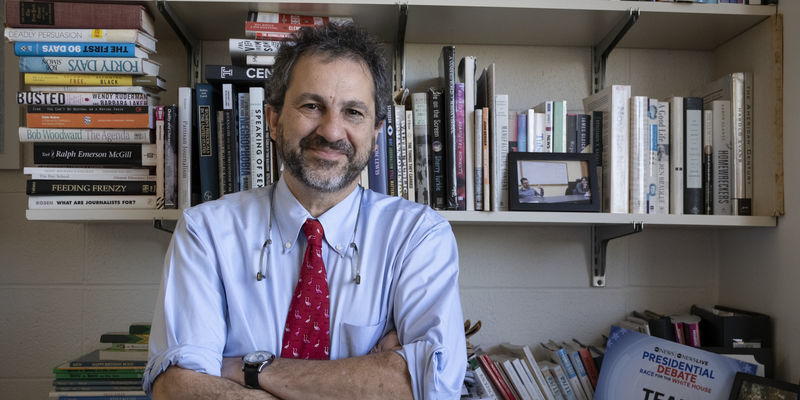Temple shares details regarding ‘pathbreaking project’ for Klein College of Media and Communication and Center for the Performing and Cinematic Arts
New joint facility will expand and modernize teaching spaces for Klein; the School of Theater, Film and Media Arts; and the Boyer College of Music and Dance. It will also serve as a community hub for activity and entertainment.

This spring, Temple University will break ground on a new facility for the Klein College of Media and Communication and the Center for the Performing and Cinematic Arts. The project will be situated on the west side of North Broad Street directly across from the entrance to Polett Walk.
When complete, the 199,000-square-foot facility will expand and modernize teaching spaces for Klein College; the School of Theater, Film and Media Arts (TFMA); and the Boyer College of Music and Dance. Just as importantly, it will also serve as a community hub for activity, education and entertainment. As a landmark structure on the main artery that is North Broad Street, the new building will carry on a longstanding radiation of arts and culture that has always flowed through the center of Philadelphia. This will strengthen connections between Temple and other educational and cultural destinations, such as The Met, PAFA, The Kimmel Center and the Academy of Music.
An official groundbreaking for the new facility, which has been designed by international architecture firm Skidmore, Owings & Merrill, will be held in spring 2025.
“This is a pathbreaking project for both Temple and North Philadelphia,” said Temple University President John Fry. “This new, state-of-the-art facility will provide resources and opportunities that will prepare a more agile and adaptable workforce of future journalists, communicators and performing artists. It is also an opportunity for us to further our engagement with our North Philadelphia neighbors.”
Most recently, university leaders met with the coordinating registered community organization. The group was overwhelmingly supportive of the project, due in no small part to the fact that the building was designed with the community in mind. Over the last year, Temple has completed both the legislative and land use approval process, which has involved community meetings as well as presentations to the Civic Design Review committee, the Philadelphia City Planning Commission and the Rules Committee hearing of Philadelphia City Council.
The building’s visibility from North Broad Street will help encourage community engagement. It features a new cluster of theaters, including a 375-seat proscenium venue, 180-seat cinema, flexible 140-seat black box theater and 63-seat screening room. These spaces will replace and expand the current facilities in the Tomlinson/Annenberg complex.
The new facility will also allow Klein to further enhance its relationship with surrounding neighborhoods. In recent years, the college has helped create professional news organizations for the Philadelphia communities of Kensington (Kensington Voice) and Germantown (Germantown Info Hub). The work by Klein’s Logan Center for Urban Investigative Reporting and the Claire Smith Center for Sports Media is also deeply rooted in the community.
“There are so many ways that we as the Klein College of Media and Communication want to further our engagement with the community,” said David Boardman, dean of Klein. “A more open and visible building along North Broad Street is going to innately lead to more opportunities for this type of community collaboration, and we are excited to see how that can grow even further in the years to come.”

(Photo courtesy of ATCHAIN and Skidmore, Owings & Merrill)
Many current Klein and TFMA programs are presently limited because they reside in the 55-year-old Annenberg Hall/Tomlinson Theater building complex. The new facilities will provide critical resources to allow these programs to grow, so they can better prepare students for careers in tomorrow’s job market and to find new opportunities for collaboration, both within their own programs and with each other.
“Disciplines are now fusing together more than ever before. Everything has started to come together, and this new building allows us to do that here at Temple, as well,” said Robert Stroker, dean of the School of Theater, Film and Media Arts and Boyer College. “This project will bring our theater and film programs in closer proximity and provide them with facilities that will allow them to continue to grow and modernize while also finding new ways to work together. We train actors for the stage and screen and develop filmmakers who understand the crucial role of costumes and sets. Creating a tighter nexus for these programs and providing them with industry-standard facilities and equipment will position our students for even greater levels of success.”
One feature of the new building will be a modern, integrated student media center, which will house The Temple News, Temple TV, WHIP, and student advertising and public relations agencies. The building will also include state-of-the-art audio/editing suites, a podcast studio and wellness rooms, as well as a virtual reality/innovation lab.
In addition to updated theater and lobby spaces, the new building will provide TFMA students with expanded costume and scene shops and rehearsal spaces with natural lighting; an industry-standard soundstage with adjacent directing lab and new media studio; an animation lab; and updated post-production facilities that include editing suites, a sound mix suite, Foley and ADR (automated dialogue replacement) studio, immersive audio and VR suite, color correction studio, and a DI (digital intermediate) theater/classroom.
“In our field, technology and space needs change and when you’re making a movie or television series, you need to have updated sound stages where you can use the latest technology. Things have progressed so much during the last 20 years, and these new facilities will mean the world toward preparing our students for decades to come,” Stroker said.
That same new technology will also be used for youth engagement and learning. For example, young people from the neighborhoods that surround Temple’s campus will have an opportunity to use the technology and equipment to learn how to record music or tape a podcast.
“The community engagement aspect of this new building is so key,” said Vice President for Diversity, Equity, Inclusion and Community Impact Valerie Harrison. “Over the last several years, we have launched several programs and initiatives to help create pathways to higher education for young people. This building is really an extension of that, as young people from right here in North Philadelphia will have the opportunity to be introduced to new careers and fields that they might never explore otherwise.”
When the new building opens, Boardman and Stroker said they expect it to play a key role in helping to recruit faculty members as well as prospective students. The facility is also being designed to ensure that it is adaptable for future generations of students.
“We want this to be almost a living, breathing entity,” Boardman said. “We are planning this in a way that this building will be flexible and relevant for the next 50 years. It’s a real responsibility to create something like that, but we will make sure that we’ll be able to adjust, so that future students continue to benefit.”
Following the groundbreaking in the spring, the project will enter the construction phase, which is expected to take at least 30 months. The building is expected to be open for use by the Temple community at the start of the fall 2027 semester.
Most of the financial support for this project has been provided through state funds that were awarded and designated specifically for this purpose. No tuition dollars will be used to support this project, and any additional monies will be raised through fundraising efforts.
Learn more about the historic project here.


